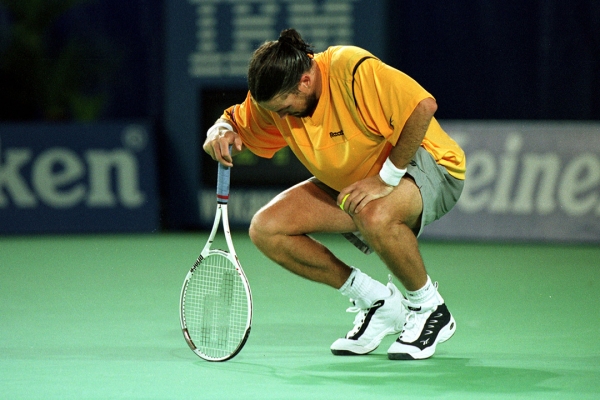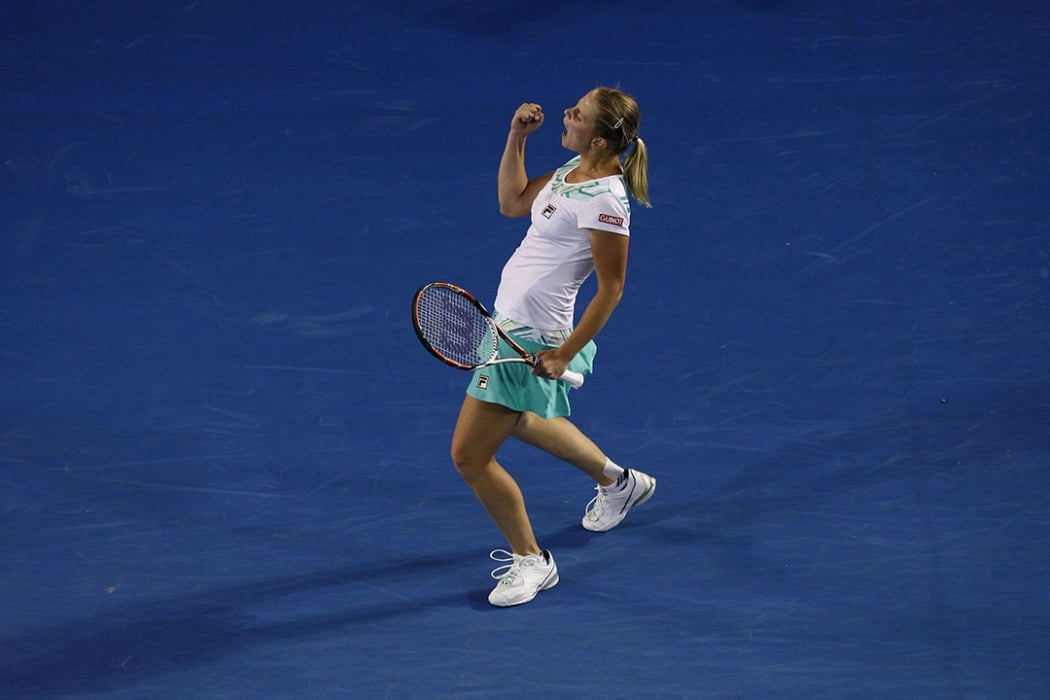In 2001, an iconic Australian Open semifinal brought together multiple storylines and delivered a full spectrum of emotions.
Andre Agassi – establishing a stranglehold over the tournament during his late-career renaissance – overcame a gallant Pat Rafter to reach his third Australian Open final, after trailing two sets to one.
It also turned out to be the last Australian Open match Rafter ever played.
The contest is the latest full AO match to be published on the Australian Open YouTube channel, with many more archive matches set for release each week.
Both extremely popular, Agassi and Rafter were at this point building one of the sport’s most compelling rivalries. They met in four Grand Slam semifinals from 1999 to 2001 – winning two apiece – and three of those four extended to five sets.
Australian Tennis Magazine editor Vivienne Christie recalls the sense of excitement surrounding the blockbuster match-up, scheduled for the second Thursday evening at Rod Laver Arena.
"Anyone covering tennis for a long time will say that there's a match they will always remember, and this is one of those matches for me,” said Christie, who watched it unfold inside the stadium.
“I was part of that group thinking: this is going to be the year that we have an Australian champion to report on.
"Plus, Agassi was such a big star in tennis; he was kind of one of the first players to cross over and become a mainstream celebrity.”
The Agassi-Rafter series had not always been this evenly matched.
Agassi was already a three-time major champion by the mid 1990s and won his first four meetings against Rafter, including 10 of the 11 sets they played. Among those was a particularly dominant 6-3 6-4 6-0 triumph in the fourth round of AO 1995.
Agassi’s career went off track in 1997, just as Rafter began to establish himself as one of the world’s best. The Australian captured the 1997 and 1998 US Open titles, and briefly rose to world No.1 in 1999 – the same year Agassi returned as a force with victories at both Roland Garros and the US Open.
When they clashed in the Australian Open 2001 semifinals, both were near the peak of their powers.
Six months earlier, Rafter had beaten Agassi to advance to his first Wimbledon final. Many believed he could repeat the feat, given he was playing by far his best tennis at the Australian Open, where he had traditionally underperformed.

When he arrived at Melbourne Park in 1998 and 1999 as the reigning US Open champion, expectations were high he could end a local title-winning drought that had stretched beyond 20 years.
Both times he fell in the third round.
Rafter was never completely comfortable with the Australian Open conditions. He felt the courts sometimes played like they were indoors – not his preferred surface – and the timing of the event so early in the season meant he entered light on matches and tournament play. “But it might be all in my mind, I don't know,” he added.
Yet in 2001, things were finally clicking on home soil.
He dismantled eighth seed Tim Henman 6-2 6-3 6-3 to reach his first AO quarterfinal, where he beat No.14 seed Dominik Hrbaty to progress another step closer to a coveted Australian title.
He discussed the satisfaction and relief he felt with this run, and how much he was enjoyed the crowd atmosphere. He was looking forward to the match-up with Agassi, too.
"It was almost as if there was a little bit of distance between Australian Open 2001, and his US Open success. So I felt, maybe that freed him up a little bit as well, so there was less pressure on him,” Christie observed.
"I remember the Henman match as a bit of a turning point; I think by the time he'd beaten him so convincingly everyone was starting to sit up and take notice, and think, 'oh gosh, this is going to be the year we finally get an Australian champion at their home Grand Slam’.
“All the signs were there that this could be the year.”
Agassi was the defending Australian Open champion, who had built a 12-match winning streak at the event. He stormed into the 2001 semifinals having lost just one set.
A huge task confronted Rafter, but with both momentum and the crowd behind him, he surged to a two-sets-to-one lead.
“I can still vividly remember just how hot it was,” Christie said.
“Even sitting in the stands, it was that sapping, high-humidity, Melbourne heat. It certainly wasn't hard work being there, but it was kind of a bit physically taxing, even sitting in the stands.”
And indeed, muscle cramps increasingly took hold of Rafter in the stifling conditions.
Agassi, an extremely astute and experienced match player at the business-end of Slams, pounced on the situation. “It's a fine line you walk out there when your opponent starts struggling physically,” he said after completing a 7-5 2-6 6-7(5) 6-2 6-3 win.
“I was just trying to execute the ball big enough to stay in control of the point, but not so big that I was taking any unnecessary risk.
“I think the biggest factor was just what he lost in the serve, and I could start really making him have to play a lot of volleys. It's hard to dig out volleys if your legs are going on you.

"I think that's what possibly his greatest weapon is – his ability to cover the court and to dig out low volleys. Once that was going on him, he was in a tough predicament.”
Rafter was glum when he faced the press, disappointed that cramping had once again affected his performance in a big match, and determined to find a solution.
“It's more frustrating to know that I had a chance. I was playing very well, I was very happy with the way I was hitting the ball,” he said.
“To fall short because of some physical imbalance, that's just the frustrating part of it.”
Agassi went on to overwhelm Arnaud Clement in the final for his third AO title.
It was part of a brilliant start to 2001; the American won 22 of his first 24 matches, capturing the Indian Wells and Miami titles back-to-back.
He beat Rafter again in the Miami semifinals, and although the Australian avenged those defeats in a pulsating Wimbledon semifinal of 2001, Agassi won their last meeting at the 2001 Tennis Masters Cup in Sydney.
It was Rafter’s final tour-level tournament.
Agassi continued competing for another five years, winning a fourth AO title in 2003 – his eighth and final Grand Slam singles trophy.
He built an unbeaten 26-match streak at Melbourne Park, which Marat Safin ended in the 2004 semifinals.
RELATED: The kings and queens of Rod Laver Arena
"Agassi always talks about wishing he'd come to Australia sooner,” said Christie of the player who finally debuted at Melbourne Park in 1995 despite years of playing at other majors.
"He was the first man in the Open Era to win three Australian Open titles, which at the time was such a huge feat.
“This (period) was the second-coming of Andre Agassi, so I think that really added to his appeal. We love a comeback story. There was a comeback in this match (against Rafter), but there was the comeback of Andre generally.
“I feel like the Australian Open was a big part of that story.”



